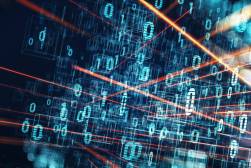Cybersecurity burnout in higher ed? There are answers, says REN-ISAC director

One of the rising cybersecurity threats higher education business leaders face is preventing talent from burning out or leaving for the private sector, said Kim Milford, executive director of the Research and Education Networks Information Sharing and Analysis Center.
There’s a known “floodgate” to industry from higher ed, she said, as the demand for cybersecurity professionals skyrockets and workers see potential for more pay and a more flexible work environment.
“We need new methods of communication and ways of doing business, of integrating staff,” she told EdScoop during Scoop News Group’s Cybersecurity Modernization Summit on Tuesday.
This isn’t just a problem for higher education cybersecurity teams. About 34% of higher education professionals said they were considering leaving their current position for a new role, in a recent poll from Educause. Many of those workers were not planning to stay in higher ed.
Cybersecurity workers across industries are feeling burnt out, as they balance high-stress security jobs with an ongoing pandemic. One firm marked February as the largest spike in cybersecurity postings in a decade, with more than 77,500 roles posted.
There’s no one solution to retaining cybersecurity staff, Milford said. Leaders can actively address burnout through maintaining a strong cybersecurity plan that is easy to follow, implementing automation where possible and rotating staff on high-stress incident responsibilities.
Another solution to burnout — loosening up in the workplace. Milford said workers should be part of organization planning and determining priorities, but the workplace should create a feeling of belonging, even for those working hybrid or remotely.
“Looking at new ways to focus on well-being, focus on community in a new world has been a bit of a challenge but I do feel we’ve been making great progress there,” she said.
Some examples Milford used were making sure that remote workers have the space to comment in hybrid meetings and creating spaces where employees can connect. At REN-ISAC, employees use a dedicated channel for sharing crafts, she said.
REN-ISAC also started doing icebreakers at the beginning of meetings, which expanded to discussions as long as 45 minutes.
“Every minute of that is valuable because it allows them to connect,” Milford said.




